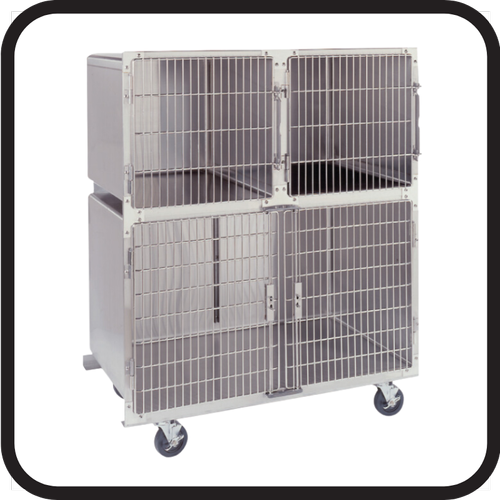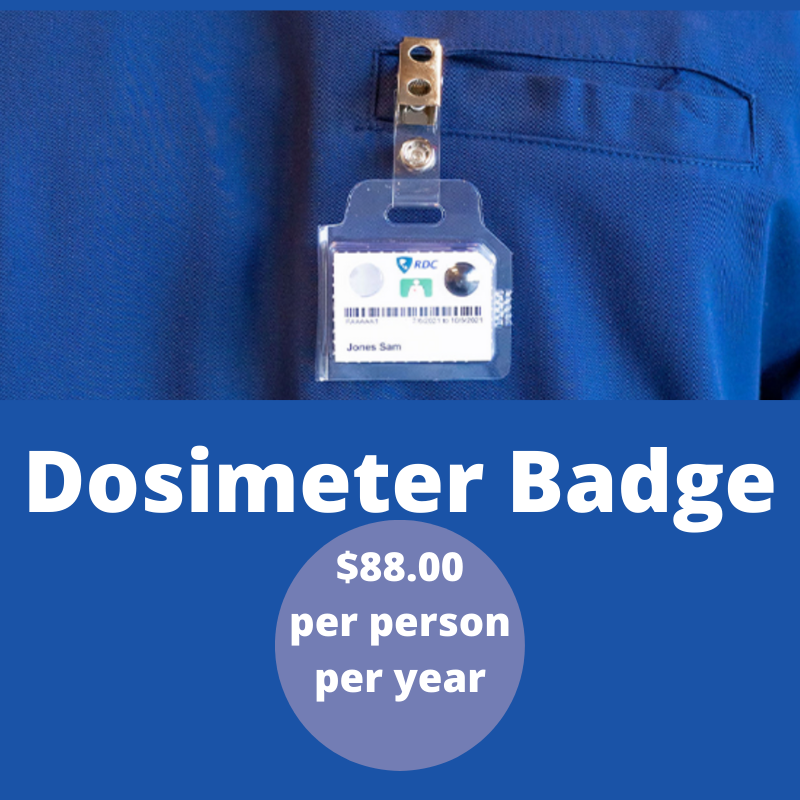Overactive Scratch Reflex In Dogs: Is This A Problem?
/Table of Contents
- Scratch Reflex in Dogs
- What are Receptive Areas?
- How You Can Assess Overactivity
- Allergenic Causes of Overactive Scratch Reflex
- Signs of Flea Allergies
- Flea Allergy Symptoms
- Treatment for Flea Allergies
- Warning Signs of Atopic Dermatitis
- Symptoms of Atopic Dermatitis
- Atopic Dermatitis Treatment
- Seasonal Allergy Awareness
- Symptoms of Seasonal Allergies
- Seasonal Allergy Treatment
- Learn About Food Allergies
- Food Allergy Symptoms
- Treatment for Food Allergies
- Signs of Canine Scabies
- Canine Scabies Symptoms
- Treatment of Canine Scabies
- Neurological Causes of Overactive Scratch Reflex
- Overview of Canine Syringomyelia
- Causes and Symptoms of Syringomyelia
- Syringomyelia Treatment Options
- Factors Impacting Overactive Scratch Reflex
- Preventative Measures for Overactive Scratch Reflex
If you have a dog or have spent a significant amount of time around dogs, then you've probably noticed how frequently they scratch themselves. Does that action make you wonder whether you should be concerned about a real issue if your dog is consistently and excessively scratching?
Overactive scratch reflex may suggest that your dog has a problem that requires a veterinarian's attention. This overactive condition is often a result of either allergenic or neurological-related causes, and symptoms may range from mild to severe depending on a variety of factors.
To best care for your dog, you'll want to make sure you understand the causes, what treatment options are available, and which factors may impact the symptoms' severity. Keep reading to find out all you need to know, plus preventative measures you can take to guard your dog against overactive scratch reflex!
Scratch Reflex in Dogs
In order to understand the intricacies of overactive scratch reflex in dogs, you must first understand the basic canine scratch reflex.
Canine scratch reflex refers to involuntary kicking of the hind leg in response to stimulation of a dog's receptive area.
This reflex is generally theorized as an adaptation to ward off bugs and other irritants. While a dog's hind leg and/or foot are unlikely to be able to reach an affected area and remove the irritants, the physical movement may effectively prevent further biting or burrowing.
What are Receptive Areas?
You may have noticed this involuntary reflex when scratching your dog's belly. If you stimulate a particular receptive area, you may see a continual kicking motion in your dog's hind leg. This is because when you stimulate the area, your dog's nerves communicate an involuntary kicking response to their hind leg.
In addition to the belly, the ear may also evoke an involuntary scratch reflex in your dog. This is referred to as the pinnal-pedal scratch reflex and is often used to narrow down canine medical diagnoses. Its presence is typically associated with very specific medical conditions.
Since this response is prompted by external stimulation, it is important to read emotional and behavioral cues from your dog. While you may assume their reaction is out of playfulness and joy (which it very well might be), you'll want to make sure it is not a hyperactive response that might indicate a medical problem.
How You Can Assess Overactivity
The line between a normal and overactive scratch reflex in dogs can, at times, be quite vague. In general, you'll want to be on the lookout if this scratching reflex starts to get in the way of your dog's basic activities and behaviors, including:
Eating and drinking proper amounts
Normal urination and bowel movements
Going on regular walks
Sleeping continually through the night
Maintaining energy levels throughout the day
If any of these routines are affected by your dog's scratching, this is the clearest sign that they may be dealing with a medical issue that requires treatment and the help of a trained veterinarian. If you have any doubts, then it is best to err on the side of caution and seek professional help rather than going it alone.
Allergenic Causes of Overactive Scratch Reflex
Allergic reactions are one of the two primary causes of overactive scratch reflex in dogs.
Many different types of allergies can impact your dog, including but not limited to:
Atopic dermatitis
Canine scabies
Flea allergies
Food allergies
Seasonal allergies
These conditions can range widely in severity, so it is important to understand these allergies and what causes them.
As you will notice further down, many of these allergies have similar associated symptoms, making the actual diagnoses quite difficult. Unless you know the sure cause of an allergic reaction in your dog, you should let a professional handle the diagnosis and determine an optimal treatment plan.
Signs of Flea Allergies
Flea allergies are one of the most common skin conditions in dogs. These allergies typically present in the summer, when temperature conditions are most optimal for fleas.
Flea Allergy Symptoms
Flea allergies can lead to several symptoms, including:
Constant and severe itching
Hair loss
Raised red or pink bumps
Raw skin or bleeding near hind legs, belly, or tail
These symptoms can severely damage your dog's skin and may last for several weeks after the initial fleabite.
Treatment for Flea Allergies
If you suspect your dog has flea allergies, it is important to consult a veterinarian who can check if your dog's skin or fur has fleas and order blood/skin tests if there is a different suspected cause.
Should your dog have a confirmed flea allergy (with associated itching and inflammation), a veterinarian may recommend antibiotics or a topical, oral, or injected medication. If you want a simple solution to alleviate the most acute symptoms, you can give your dog a cool water bath to mitigate irritation.
Additionally, you must be sure to clean the surrounding area to remove other fleas, flea eggs, and larvae. These can commonly be found on your dog's bedding, your personal bedding, and even your carpets, rugs, chairs, or sofa cushions.
Warning Signs of Atopic Dermatitis
Atopic dermatitis is a genetic predisposition to itchy (pruritic) skin that results from the inhalation of environmental allergens like pollen, house dust, grass, weeds, mold, and fungi. Many dogs that have flea allergies also tend to suffer from atopic dermatitis.
Symptoms of Atopic Dermatitis
Atopic dermatitis leads to extensive itching – at times localized and at other times all over the body. In general, however, itching usually affects the following areas:
Armpits
Ears
Face
Feet
Front legs
The specific location of itching is an important factor in determining the type of allergy. Itching like that found in dogs with atopic dermatitis can be confused with itching resulting from flea allergies.
Atopic Dermatitis Treatment
Some treatments are available to dogs with atopic dermatitis, though it is hard to prevent this condition entirely since environmental allergens are often difficult to control. A veterinarian should be able to recommend the best treatment based on which symptoms your dog presents.
Cortisone drugs (i.e., steroids) can effectively decrease inflammation and itching but can also lead to unwanted side effects like excessive drinking/urinating and shortening your furbaby's lifespan.
Antihistamines combined with essential fatty acids (EFAs) have fewer side effects but can take months to be effective.
A more targeted option is to get your dog an intradermal allergy test (IDAT) that determines which allergen is the main culprit. If it is reasonably possible to avoid the problematic allergen, this is your best option – but avoidance is likely impossible.
If this is the case, you can try allergen-specific immunotherapy (ASIT), which involves injections to stimulate an immune response and mitigate future reactions. ASIT, however, requires injections every few weeks and can take upwards of 6-12 months to be effective.
Seasonal Allergy Awareness
Seasonal allergies can affect dogs just like they affect humans. Depending on the conditions in a specific season – or during a change in season – your dog may be significantly affected for long periods of time.
Symptoms of Seasonal Allergies
There are many different symptoms associated with seasonal allergies, some of which include:
Clear, runny nose
Itchiness in armpit, groin, muzzle or paws
Recurrent ear infections
Red, swollen eyes
Sneezing
These symptoms typically present due to factors that occur only at certain times of the year, like tree/grass pollen and fresh grass during fall or summer.
Seasonal Allergy Treatment
While the presence and change of seasons (and associated allergens) are unavoidable, there are many different ways you can manage your dog's seasonal allergies.
If your dog's symptoms are mild, you can use simple over-the-counter remedies like antihistamines. There are also oral prescription medications that can remedy itching or moderate your dog's immune response to allergens – these require a veterinary prescription and annual exams.
Prescribed allergy serum is another option and involves staged doses of allergen injections over time. You can perform these injections at home with the help of guidance from a dermatology-specialized veterinarian.
Another treatment option can be managed via nutrition. Purchasing specific dog food with therapeutic formulations will help manage seasonal allergies. This approach can be used on its own or in combination with medications.
Learn About Food Allergies
Food allergies are an immune response to particular types of food. These allergies are not incredibly common in dogs, but if present, they often result from animal proteins, milk products, or wheat.
Food Allergy Symptoms
The primary symptoms related to food allergies include:
Hair loss
Itching
Skin issues
As you can probably tell, food allergies present similar symptoms to those in the allergy categories mentioned prior. So it is very important to consult a professional to parse out your dog's exact allergen.
Treatment for Food Allergies
The main way to treat food allergies is by an elimination test arranged by a veterinarian (this process is typically ~3 months in duration). Your dog will be prescribed specific types of limited-ingredient dog food. Based on these results (and the presence and/or absence of a reaction), you will learn which types of food to avoid.
Importantly, since food allergies present overlapping symptoms with other types of allergies, an elimination test might show that your dog is not allergic to any types of foods!
In this case, your veterinarian can rule out food allergies and look into other potential allergies.
Signs of Canine Scabies
Canine scabies result from a superficial burrowing mite (sarcoptes scabiei var canis). Importantly, it is highly contagious not just to other dogs, but it can also be passed to humans and other animals depending on the conditions.
Canine Scabies Symptoms
There are a handful of symptoms associated with canine scabies, most of which represent various stages of progression:
Intense itching
Small, solid bumps on the skin
Thick, crusted sores
Yeast or bacterial infections on abdomen, chest, ears, elbows, or legs
Given the ease with which these symptoms can worsen and spread, it is very important to identify and treat canine scabies as early as possible.
Treatment of Canine Scabies
Initial diagnosis of canine scabies requires a veterinarian's expertise, who will typically begin by collecting skin/stool samples and performing a blood test.
Proper treatment requires the removal of dirt and crust using medicated shampoo and anti-mite dip. Other treatment includes internal or topical medicines, as well as treatment for secondary infections as needed.
Neurological Causes of Overactive Scratch Reflex
While overactive scratch reflex may suggest any number of allergenic causes, it may also suggest a more serious condition known as syringomyelia. This condition can be extremely painful and debilitating to your dog.
Overview of Canine Syringomyelia
Canine syringomyelia is a "spinal cord condition characterized by fluid-filled cavities called syrinxes within the spinal cord which, as they grow, cause painful neurological deficits." (K9 Magazine).
This condition commonly impacts miniaturized and short-nosed dog breeds, though the most affected breed is the Cavalier King Charles Spaniel (CKCS) due to its distinctive head shape.
1 in 60 CKCSs are affected by syringomyelia versus 1 in 2000 for the overall population of various dog breeds.
Causes and Symptoms of Syringomyelia
The primary cause of canine syringomyelia is an abnormality in the area where the skull joins the vertebrae in the neck, which results in leakage of cerebrospinal fluid (CSF) into the spinal cord. The tissue, therefore, becomes enlarged, and fluid-filled cavities develop.
Your dog may experience mild or severe symptoms unrelated to the size of the syringomyelia. In general, common symptoms include:
Back pain
Intermittent neck pain
Neck and shoulder scratching
Reluctance to jump or climb
Yelping
Syringomyelia is most often found on a magnetic resonance imaging (MRI) scan of the brain and spine. Simultaneously, this condition may incidentally be found while scanning for other abnormalities since dogs do not always present obvious symptoms.
Syringomyelia Treatment Options
The ideal treatment for syringomyelia is to use ongoing medications, which generally serve to manage pain, treat itching, and reduce cerebral spinal fluid production. If these medications are not effective, however, then you may need to consider more serious options.
While considerably more invasive, surgery is the next best option. This would require a specialized surgeon, who would perform caudal foramen magnum decompression or a suboccipital decompression. This procedure would adjust the rear of your dog's skull and reduce fluid leakage into the spinal cord.
Unfortunately, surgery is not a guaranteed solution. In certain cases, your dog may show signs of improvement, but in other cases, your dog may require medication-based treatment even after surgery.
Factors Impacting Overactive Scratch Reflex
The severity of the overactive scratch reflex, and the resulting symptoms, can vary widely for more reasons than simply the underlying cause. Important factors to consider for your dog include:
Age – symptom severity may become worse with older age and strengthened immune response to certain allergens
Breed – certain breeds are more susceptible to severe allergies or may be at higher risk to develop syringomyelia
Health history – for dogs with prior allergic reactions, these can worsen in severity with reoccurrence due to stronger immune responses
Location/environment – for allergen-related causes, in particular, factors like weather, temperature, and the general surrounding environment can exacerbate symptoms
Time to diagnosis – delayed diagnosis can result in significantly worse symptoms due to a lack of effective treatment delivery
To the extent possible, you want to make sure you fully understand your dog's biology and environment. This will ultimately provide information regarding not only its predisposition to overactive scratch reflex, but it will also impact the severity of its associated symptoms.
Preventative Measures for Overactive Scratch Reflex
Now you are probably wondering the best way to avoid having to deal with overactive scratch reflex in the first place! Of course, syringomyelia comes from an unavoidable genetic malformation, so this is hardly controllable. But there are many preventative measures you can take to combat allergies.
One of the best preventative measures you can take is to ensure that your dog has sound hygiene and clean living conditions. Atopic dermatitis, seasonal allergies, and canine scabies are all very much intertwined with environmental conditions, so ensuring your dog is regularly bathed and clean is key.
Concerning flea allergies, you can use year-round topical or oral medications to prevent severe reactions. You can also use things like flea powders or sprays that can temporarily protect your dog from fleas if, for example, you want to take your dog on a short walk outside.
Overall, it is natural to be concerned about your dog, and it is important to remember that you can never be too careful. Dogs can very often be born with, develop, or catch various conditions that may result in overactive scratch reflex. So, if you suspect your dog needs treatment, do not hesitate to get help!
Sources Used:





























